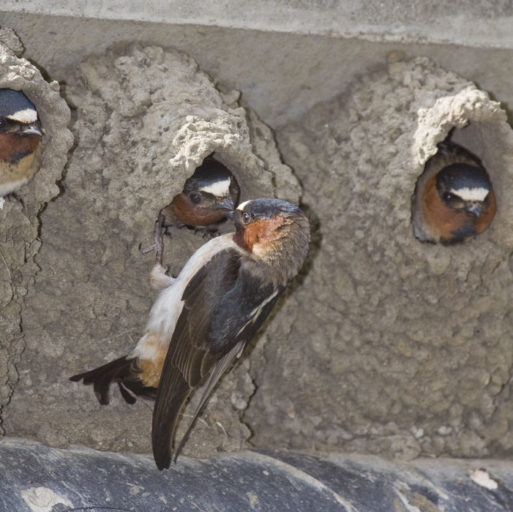Nearly 70 years ago, Edwin Ujor of the Nigerian Forestry Service collected a specimen of a tree from a forest high up in the Bamenda highlands in Cameroon. The specimen…
In a remote part of the Atlantic Ocean off Brazil, researchers have found a stunning pink-and-white neon-colored fish that’s new to science. Luiz Rocha, an ichthyologist at the California Academy…
Marine ecologists have described a bright-red species of coral from Panama that’s new to science. The researchers found the coral growing at a depth of 45 to 50 meters (148…
Amazonian rivers don’t often drive the creation of new species, but do help maintain distinct populations, according to a study published in the journal Science Advances last month. Amazonian rivers…
Scientists have discovered a new species of orchid in the Amazonian rainforests of Peru. SERNANP, Peru’s national parks service, announced that the new species was discovered on Bella Durmiente mountain,…
In a counterintuitive surprise, a new study finds that fish species evolve more than twice as rapidly at the poles than in the tropics. The reason why isn’t currently known.
Evolution takes time and space. Enough time needs to pass for genetic differences to crop up in a population of animals and make them distinct from their forebears. And enough…
A new study drastically upends conventional wisdom about when plants colonized land, pushing back the date about 80 million years to around half a billion years ago. The new date…
Although they may lie thousands of miles apart and house different species, the world’s tropical forests may not be as different from each other as they seem to be. A…
Scientists have compiled a list of every known vascular plant found in North and South America, providing a new tool to understand how species are distributed throughout the two continents.…
A team of scientists from Seychelles, the United States and the United Kingdom has found a new caecilian, perhaps the smallest species of the legless amphibian on Earth. "As soon…
Camera trap footage has shown, for the first time, that a threatened bat species in Malaysia is an important pollinator of durian trees (Durio zibethinus). Past research in other parts…
Stable climates tend to have more bird species, according to new research. There’s a widespread notion that climate change encourages the proliferation of new animal species. But ecologist Roland Jansson…
The first DNA analysis of ancient straight-tusked elephant fossils may be changing what we know about elephant evolution. Scientists have presumed that a species of giant elephant called Palaeoloxodon antiquus,…
There are three orders in the class Amphibia, collectively comprising nearly 7,700 species. Of those three, the order Anura, which includes frogs and toads, represents 6,787 of the world’s known…
Roads have been described as “an enormous net over the land” and “the largest human artifact on earth.” There are more than four million miles of roads in the United…
Sometimes for a scientist, the disconnected pieces of years of research come together in a single, “really awesome” point in time. For ecologist Greg Asner, where it happened was about…
cientists have long known that invasive species possess “pesty traits” that benefit their spread. But what if similar, but latent, “pesty traits” could be triggered into action in endangered species…
There are only a handful of bird species known to use tools for foraging in the wild, and now the ‘Alalā, or Hawaiian crow, can be counted as one of…
Sex is getting complicated. Especially fish sex in New England. Scientists have recently discovered that fish in the northeastern U.S. are changing gender – and it’s not due to an…
Next year is the 100th Anniversary of the United States National Park Service, a branch of the Department of the Interior. The NPS largely owes its existence to one of…
Nature isn’t quite so natural anymore. Our interaction with the world around us has changed it drastically, and nowhere more so than in cities, vast artificial landscapes lacking in biodiversity.…
Rainforests are full of bats, and with over 1,300 known species around the world bats really do come in all shapes and sizes. Each species has its own range of…
Researchers find small-scale farming may lead to a loss of "650 million years of evolutionary history."
We’re used to thinking of evolution as leading to greater diversity — one species evolving into multiple new, distinct species. But a new find in Madagascar shows evolution can work…
Can a sanctuary in Indonesia keep the world's most imperiled rhino from extinction? "One percent of the world's population," veterinarian Zulfi Arsan says as he nods towards Bina, a 714-kilogram…
A cinereous mourner nestling that resembled a toxic caterpillar in the Megalopygidae family of moths. Photo by: Santiago David Rivera. "Mama, I wanna be a toxic caterpillar," says the little…
When assessing the status of an endangered species, conservationists often take into account environmental factors, such as threats to habitat, and behavioral patterns of breeding and feeding. Increasingly, scientists also…
Imitation can be obnoxious. For those with siblings, imitating your brother's or sister's every word was a surefire way to steadily drive them toward insanity. Annoying it may be, imitation…
A recent study examines the evolution of viper species in East Africa, highlighting the region's mountaintop forests as among the most biodiverse in the world and calling for their protection.…

























